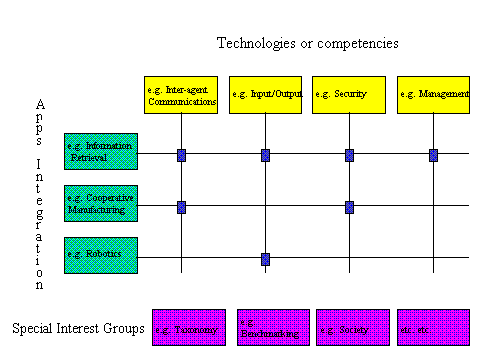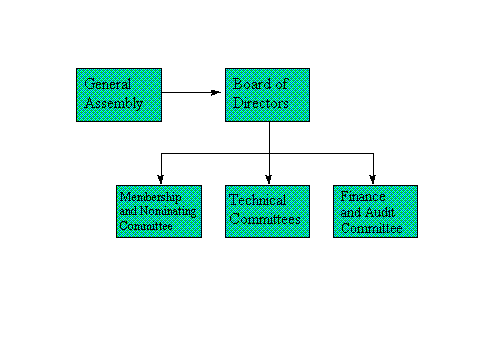| FIPA | 96/06/30 11:18 |
| FOUNDATION FOR INTELLIGENT PHYSICAL AGENTS | tkobjectives |
| Source: L. Chiariglione |
![]() -- Objectives of Tokyo meeting --
-- Objectives of Tokyo meeting --![]()
The Tokyo meeting will be held in Tokyo on 7 to 11 October and will be hosted by NHK (Japan Broadcasting Corporation), at their Science and Technical Research Laboratories. This will be the third FIPA meeting, building on the momentum created by the first two meetings.
The first meeting confirmed the need and timeliness of the FIPA initiative, approved a draft workplan and produced a first list of basic agent capabilities. The second meeting decided the formal establishment of FIPA, confirmed the workplan that includes publication of the first FIPA Call for proposals at the third meeting and approved four basic reference documents:
The third meeting will
1. Production of First FIPA Call for Proposals
This will be the final step of a process started at the first (London) meeting and the first step towards production of the first set of specifications in 1997. Everybody is invited to submit descriptions of applications of his/her interest with precise identification of agent technologies needed to implement them and their requirements. Agent technologies will have to make specific reference to the list of agent technologies produced in Yorktown.
FIPA will select a small set of representative applications making sure that they cover the diversified interests of the FIPA technical communities. To help speed up the selection process, companies may consider making joint proposals with other companies sharing common goals. This has been already successfully done in other initiatives of this nature (e.g. MPEG and DAVIC). The application selection will be followed by the drafting of a Call for Proposals requesting submission of agent technologies that the submitter believes respond to the needs of one or more of the selected set of representative applications.
It is to be noted that the Tokyo meeting will focus exclusively on technologies to be specified during 1997.
Four ad-hoc groups have been established to progress the work kicked off in Yorktown. In this phase ad-hoc group membership is open.
2. Establishment of FIPA Technical Committees
The organisation of work will be based on Technical Committes (TC) in charge of producing specifications of generic technologies usable across the different applications ("tools" in FIPA language). The number and mandate of TCs is still undecided and will largely be driven by the needs of applications selected in Tokyo.
TCs will produce tools but FIPA needs to make sure that the tools can be successfully integrated to support the selected applications. This will be the task of one or more application-driven committees that will be in charge of integrating the generic technologies specified by the other TCs.
FIPA activity is strongly driven by the need of delivering on time (October 1997) high-quality specifications supporting the first set of applications selected in Tokyo. However, agents is a buoyant field whose evolution must be closely tracked to identify the next opportunities of agent maturity that enable more applications serving the needs of FIPA members. This will be the task of Special Interest Groups (SIG). SIGs may lead to the eventual formation of new TCs when such a need will arise.
The figure below describes by examples a possible organisation of work for the 1997 time frame. The names of TCs and SIGs is, at this point in time, purely fictitious.
 .
.
Fig. 1 - A possible organisation of work for the 1997 time frame
3. Establishment of FIPA statutory organs
A matrix organisation as described above serves the purpose of producing generic technologies and, at the same time, making sure that they are usable in target applications. But there is obviously a need of an instance above the technical organisation of work that will give general directions and resolve possible conflicts. This function will be executed by the Board of Directors. The Board of Directos has also other functions as mandated by the FIPA Statutes. The figure below depicts the functions of all FIPA statutory organs. The box "Technical Committees" refers to Fig. 1 above.

Fig. 2 - General organigram of FIPA
The Yorktown meeting approved the final version of the FIPA Statutes and gave mandate to L. Chiariglione to execute the actions necessary to formally establish FIPA as a non-profit association in Switzerland. The Tokyo meeting will elect a Board of Direcors and approve Nominating Lists for Members of the Finance & Audit, and Membership & Nominating Committees. TCs will be established and their Chairs appointed.